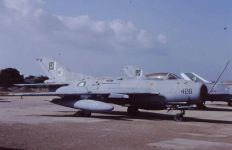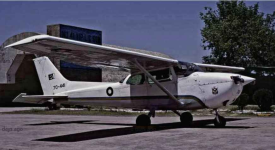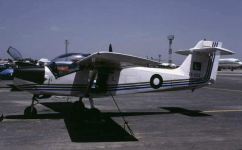ghazi52
THINK TANK: CONSULTANT
- Mar 21, 2007
- 117,031
- 167,201
- Country of Origin

- Country of Residence

- Thread starter
- #106
On April 15th 1952, establishment of the Flying Instructors School (FIS) at Pakistan Air Force College Risalpur.
Although FIS was relocated to PAF Base, Chaklala in May 1954, however, it was later shifted back to Risalpur in April 1962.
The motto of the Flying Instructors School is "علم و پرواز" which translates to "Knowledge and Flying". The Flying Instructors School is renowned as the ‘Cradle of Learning’, where instructor pilots receive comprehensive academic and flying training to hone their skills and become proficient educators in aviation.
The primary objective of FIS is to provide training for instructor pilots who would serve in the PAF, Pak Army, Navy and other friendly countries. Flying Instructors' Courses were initially conducted on T-6G Harvard aircraft and as the years progressed now the future instructors receive training on SMK, T-37 and K-8P aircraft. FIS is distinguished for its three-dimensional training system that encompasses academic schooling, flying training and special emphasis on instructional techniques.
The school plays a crucial role in producing proficient instructor pilots through enhancement of their basic flying skills in addition to keeping them up-to-date with modern military flying techniques.
Training of flying instructors holds paramount importance for both peace and wartime operations of Pakistan Air Force. In times of peace, well-trained instructors are essential for producing skilled pilots who can safely operate aircraft and carry out missions efficiently whereas during wartime, proficient instructors are crucial for rapid training and preparation of a competent fleet of pilots to ensure requisite degree of Air Control in a compressed & challenging environment.
Flying instruction in Pakistan Air Force holds utmost importance for maintaining operational readiness and enhancing aviation capabilities of PAF aircrew in order to ensure the most assured aerial defence of the motherland.
Although FIS was relocated to PAF Base, Chaklala in May 1954, however, it was later shifted back to Risalpur in April 1962.
The motto of the Flying Instructors School is "علم و پرواز" which translates to "Knowledge and Flying". The Flying Instructors School is renowned as the ‘Cradle of Learning’, where instructor pilots receive comprehensive academic and flying training to hone their skills and become proficient educators in aviation.
The primary objective of FIS is to provide training for instructor pilots who would serve in the PAF, Pak Army, Navy and other friendly countries. Flying Instructors' Courses were initially conducted on T-6G Harvard aircraft and as the years progressed now the future instructors receive training on SMK, T-37 and K-8P aircraft. FIS is distinguished for its three-dimensional training system that encompasses academic schooling, flying training and special emphasis on instructional techniques.
The school plays a crucial role in producing proficient instructor pilots through enhancement of their basic flying skills in addition to keeping them up-to-date with modern military flying techniques.
Training of flying instructors holds paramount importance for both peace and wartime operations of Pakistan Air Force. In times of peace, well-trained instructors are essential for producing skilled pilots who can safely operate aircraft and carry out missions efficiently whereas during wartime, proficient instructors are crucial for rapid training and preparation of a competent fleet of pilots to ensure requisite degree of Air Control in a compressed & challenging environment.
Flying instruction in Pakistan Air Force holds utmost importance for maintaining operational readiness and enhancing aviation capabilities of PAF aircrew in order to ensure the most assured aerial defence of the motherland.







